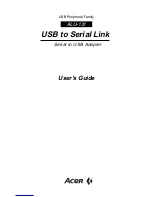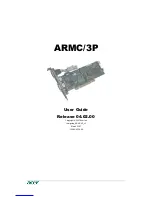
GL-1
7110-A2-GB20-00
June 1997
Glossary
Alternate Channel Alternate Mark Inversion. A method of allocating DS0 channels as a
group, so that every alternate DS0 channel does not carry data, but instead transmits and
receives all ones.
A software program housed within a device to provide SNMP functionality. Each SNMP
agent stores management information and responds to the manager’s request.
A single bit stream that combines two or more bit streams.
Alarm Indication Signal. A signal transmitted instead of the normal signal to maintain
transmission continuity and to indicate to the receiving device that a transmission fault
exists.
Alternate Mark Inversion. A line coding technique used to accommodate the ones density
requirements of T1 lines.
American Standard Code for Information Interchange. A 7-bit code that establishes
compatibility between data services. ASCII is the standard for data transmission over
telephone lines.
Devices that can be attached, either locally or remotely, to display or print the DSU’s alarm
messages.
A data transmission that is synchronized by a transmission start bit at the beginning of
a character (five to eight bits) and one or more stop bits at the end.
Attention Command Set. A group of commands, issued from an asynchronous DTE, that
allows control of the modem while in Command mode. All commands must begin with the
characters AT and end with a carriage return.
Asynchronous terminal interface. This feature allows a device to be controlled from an
async (asynchronous) terminal like an ASCII (VT100-compatible) terminal.
An operational mode in which the DSU forces automatic setting of the DDS line rate/speed
(56 or 64 kbps) as soon as a valid DDS network signal is detected.
The auxiliary communications port on a router.
Bursty Errored Seconds. Seconds with more than one, but less that 320 CRC6 errors.
A method of allocating DS0 channels as a group rather than individually.
Bipolar Violation. A modified bipolar signaling method in which a control code is inserted.
Bipolar with Eight Zero Substitution. A line coding technique used to accommodate the
ones density requirement of T1 lines.
Circuit Card Assembly. A printed circuit board to which separate components are attached.
Consultative Committee on International Telegraphy and Telephony. See ITU.
Carrier Detect. A signal indicating that energy exists on the transmission circuit.
Associated with Pin 8 on an EIA-232 interface.
An independent data path.
ACAMI allocation
method
agent
aggregate
AIS
AMI
ASCII
ASCII Terminal or
Printer
asynchronous
AT Command Set
ATI
autobaud mode
AUX port
BES
block allocation
method
BPV
B8ZS
CCA
CCITT
CD
channel










































